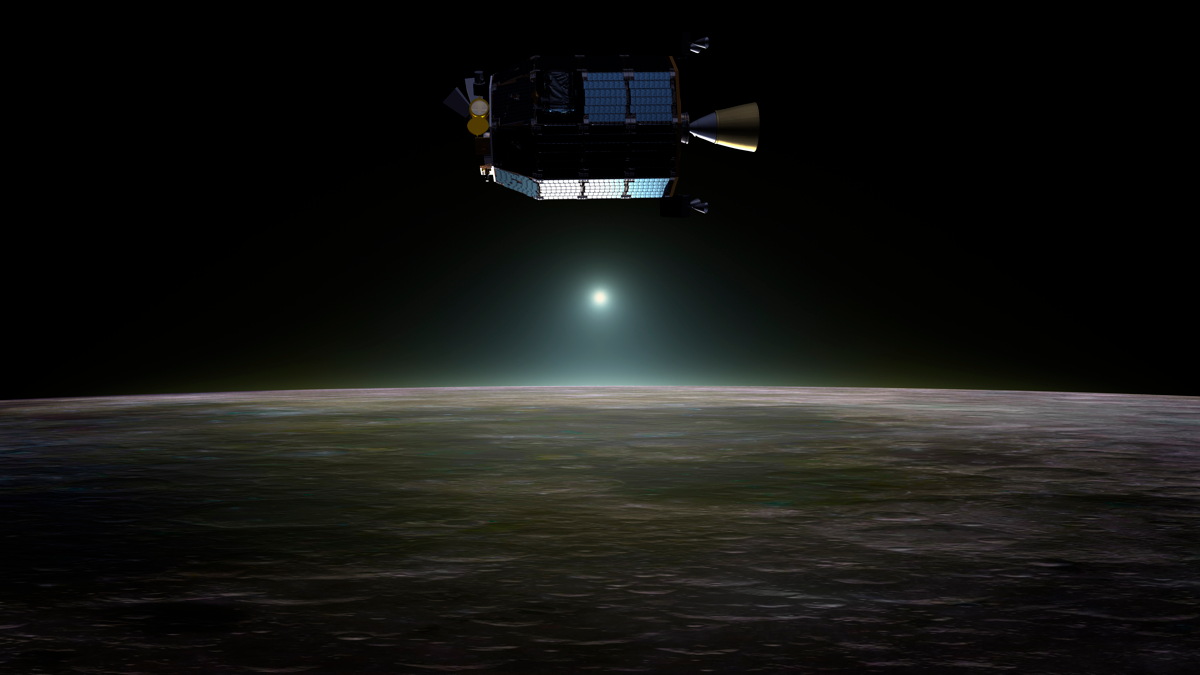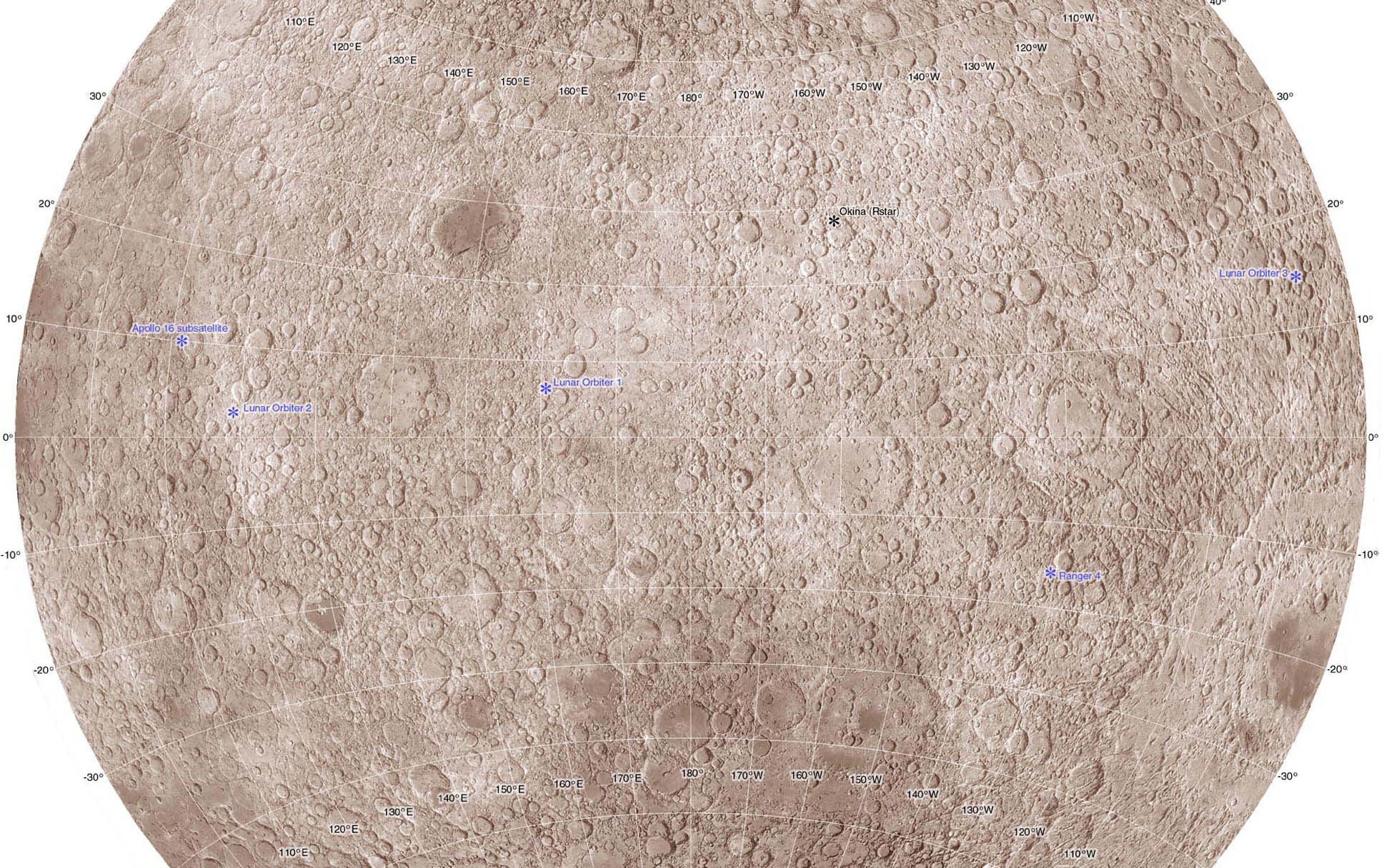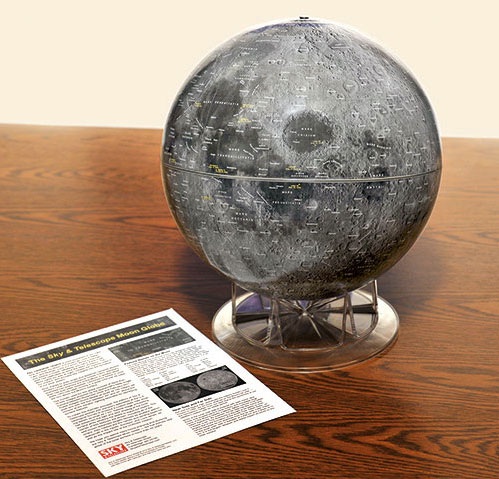
'Graveyard' on the Moon's Far Side Welcomes NASA Spacecraft

Last week's intentional crash of a NASA probe on the far side of the moon added one more body to an already substantial graveyard of space hardware.
NASA's Lunar Atmosphere and Dust Environment Explorer (LADEE) slammed into the moon's surface, as planned, in the early hours of April 18, bringing an end to a $280 million mission that launched in September 2013.
LADEE's smash landing on the moon's far side is far from unique, said Philip Stooke of the University of Western Ontario in Canada, a space-mapping expert who documents lunar and planetary exploration. [The Greatest Moon Crashes of All Time]

"The total is six so far, and no landers. … Nothing has ever landed on the far side," Stooke said. Those six are all American, except for Okina, one of the little sub-satellites of the Japanese Kaguya mission that orbited the moon from September 2007 to June 2009.
"The first was Ranger 4 back in the mid-60s, when we were all a lot younger," Stooke said. "Then, three of the five Lunar Orbiters, and a sub-satellite released in lunar orbit by Apollo 16."
Stooke said that there could be others, since no one knows the crash sites of some hardware — for example, the Apollo 10 Lunar Module (LM) descent stage; the Apollo 11 and 16 LM ascent stages; the Apollo 15 sub-satellite; and the former Soviet Union's Luna 11, 12, 14, 19 and 22 missions. In addition, there's India's Chandrayaan 1 and another sub-satellite ejected during Japan's Kaguya mission.
"Several of them might be on the far side," Stooke said.
Get the Space.com Newsletter
Breaking space news, the latest updates on rocket launches, skywatching events and more!
LADEE's final resting place is unclear at the moment, but NASA plans to look for the spot with its sharp-eyed Lunar Reconnaissance Orbiter probe (LRO).

Some researchers think LADEE may have crashed into a crater called Sundman V. If LADEE’s final resting spot is indeed in that area, there is some good news: Pre-impact imagery of Sundman V is available, and contrasting old and new LRO camera photos should enable a focus on the crash site.
Word is that LRO won't be able to train its sharpshooting camera system on the area for several weeks. Moreover, it is not clear if LADEE might have struck Sundman V on the east side or west side of the crater.

Space archaeologists are eager to find out where LADEE went down as well.
"I think artifacts and features put on the far side of the moon show humanity's need to explore the unseen universe," said Beth O'Leary, an associate professor of anthropology at the University of New Mexico in Las Cruces, an expert in the field of space archaeology.
"Columbus sailed west into an unknown world, and just as archaeologists have located his landing sites, in the future there will be physical evidence of humans who made it to another celestial body — the far side of the moon — they had never glimpsed from Earth," O'Leary told Space.com
The anthropologist said she also found it interesting that NASA involved the public in predicting when LADEE would crash.
"On their website about LADEE, they compare its impact with other natural impact features such as meteorites," O'Leary said, "but this is a very human impact, and the crater and the cultural remains deposited on the lunar surface are testaments to humanity's stage of exploration in 2014."
Leonard David has been reporting on the space industry for more than five decades. He is former director of research for the National Commission on Space and is co-author of Buzz Aldrin's new book "Mission to Mars – My Vision for Space Exploration" published by National Geographic. Follow us @Spacedotcom, Facebook or Google+. Originally published on Space.com.
Join our Space Forums to keep talking space on the latest missions, night sky and more! And if you have a news tip, correction or comment, let us know at: community@space.com.

Leonard David is an award-winning space journalist who has been reporting on space activities for more than 50 years. Currently writing as Space.com's Space Insider Columnist among his other projects, Leonard has authored numerous books on space exploration, Mars missions and more, with his latest being "Moon Rush: The New Space Race" published in 2019 by National Geographic. He also wrote "Mars: Our Future on the Red Planet" released in 2016 by National Geographic. Leonard has served as a correspondent for SpaceNews, Scientific American and Aerospace America for the AIAA. He has received many awards, including the first Ordway Award for Sustained Excellence in Spaceflight History in 2015 at the AAS Wernher von Braun Memorial Symposium. You can find out Leonard's latest project at his website and on Twitter.









